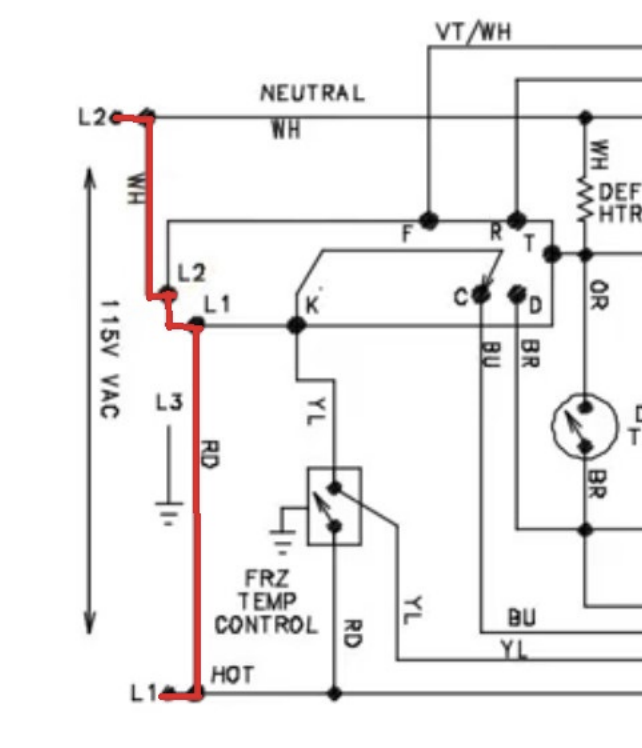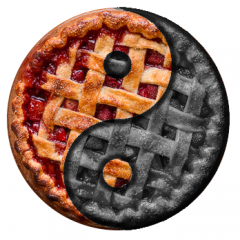Quick Tips for Reading Unclear or Ambiguous Schematics
Sometimes, the schematics that manufacturers give us aren't as clear as we would like them to be. Take this refrigerator, for example:
There are a few confusing things going on with this schematic, but we'll start with the part I've circled. What is that rectangle? It's drawn with the same lines as all the wires, and we're seeing connections going directly to it. There's no label anywhere calling it out as a discreet component. Could it be that that rectangle really is a loop of wire connecting all of those conductors together? Well, let's see what the ramifications of that would be...

Right off the bat, we see why this can't possibly be the case. If that rectangle really were just a conductor connecting all those wires, you'd have a dead short between the two lines of your power supply.
What I'm sure some of you have already guessed is that this rectangle is in fact showing a control board. All those connections aren't directly connected to each other -- there are switches inside the board which aren't shown on this schematic that can open or close the connections between these wires. Why the guy who made up this schematic drew it so unclearly and didn't feel the need to label it escapes me, but hey, this is the kind of stuff we have to deal with.
Another silly aspect of this diagram you may have noticed: our power supply is called out as L1 and L2. Is this some fancy 240 VAC refrigerator?
But wait, the label across the power supply says it's only 115 VAC. And beyond that, those lines are also labelled as hot and neutral. So here's a case where the creator of this schematic veered away from conventions and decided to label line and neutral as L1 and L2. If you're paying attention, you'll even see that ground is labelled as L3.
Both of these unclear aspects of this schematic highlight an important point when it comes to reading technical literature: it's vital to have a functional understanding of electricity and the technology behind these appliances. If you already have a firm grasp of power supplies, you won't be thrown off by these silly L1 and L2 labels. You can immediately tell that the power supply must be 120 VAC. Similarly, through a solid understanding of electricity and schematic conventions, you can know without a label that that rectangle must be a control board.
A solid foundation in electricity and the underlying technology of all appliances is exactly what we teach at the Master Samurai Tech Academy. If you want to troubleshoot with ease and be the best tech you can be, click here to check out our online, self-paced appliance repair training courses.
-
.png) 7
7
-
 2
2







2 Comments
Recommended Comments